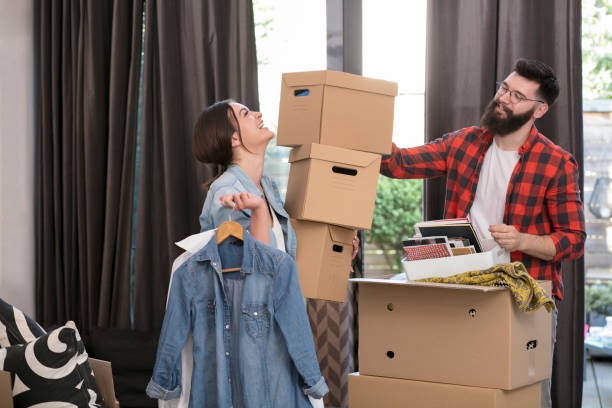Imagine stepping into your apartment after a long day at work: surfaces are clear, items are neatly arranged, and there’s a sense of calm and order. This is the joy of a decluttered space. A clean and organized living area not only looks appealing but also has numerous advantages. It reduces stress, increases productivity, and can even encourage healthier lifestyle choices.
However, in the hustle and bustle of our modern lives, maintaining a decluttered home can seem like a Herculean task. You might find yourself caught in a dilemma: to clean or to rest? Or perhaps clean first so you can rest better? The struggle is real, but with some strategic planning and practical tips, it’s possible to create and maintain a decluttered space.
When is the Best Time to Declutter Your Apartment?
Knowing when to declutter is the first step towards maintaining a neat and organized home. For those who prefer to declutter on the weekends when they have more time and energy, this works best. Others prefer to break it up into smaller tasks throughout the week, tackling one area at a time. There is not a “one-size-fits-all” solution here; the secret is to identify and adhere to the schedule that suits you the best.
Keep in mind that decluttering does not need to take all day. Over time, even fifteen minutes a day can have a big impact. Additionally, make an effort to declutter frequently; it is simpler to keep a clean home than to start over every time.
However, knowing when to declutter is just the beginning. The bigger challenge lies in how to declutter your apartment efficiently.
15 Practical Ways to Declutter Your Apartment
Now that you’ve determined when to declutter, let’s delve into how to declutter. Here are 15 practical ways to declutter your apartment, each with its own unique approach and benefits.
One-In, One-Out Rule
The goal of this rule is to keep things in balance. An old item should go every time you bring a new one into your apartment. This helps prevent the gradual accumulation of items and keeps clutter under control. For example, when you purchase a new pair of shoes, give away or donate your old ones.
The KonMari Method™
This Marie Kondo method advises you to only hold onto things that “spark joy.” Sorting is done by category rather than by place. Clothes are sorted first, followed by books, papers, random objects, and sentimental items. When something no longer brings you joy, acknowledge its usefulness and take it out of your house.
Four-Box Method
Using this method, things are sorted into four groups: trash, give away, keep, and relocate. Sort everything in your apartment’s rooms and place it in a box like this. This helps you make conscious decisions about each item and prevents you from just moving clutter around.

Use Vertical Space
Vertical space often goes unused in apartments. Consider installing shelves, hooks, or racks on walls, backs of doors, and insides of closet doors to store items and free up floor and surface space.

Closet Hanger Method
This method helps identify clothes you don’t wear. Make sure every hanger is facing the same way. After putting something on, flip the hanger around. After a few months, any hangers still facing the original direction are holding clothes you haven’t worn, which you can consider removing.
365 Method
This method encourages you to declutter your apartment by getting rid of one item each day for an entire year. This method’s simplicity and reasonable pace are what make it so attractive. You could discard anything from a piece of clothing you haven’t worn in years, an old magazine, a kitchen utensil you never use, or even an expired product in your pantry. These modest daily efforts will add up to a substantial decrease in clutter over time.
20/20 Rule
Coined by The Minimalists, the 20/20 Rule is a guideline suggesting that if you can replace an item in less than 20 minutes or for less than $20, it’s safe to remove it from your space. This rule is particularly helpful when dealing with those “just in case” items that we often keep around but rarely use, such as extra cables, old chargers, or rarely used kitchen gadgets.
Digital Declutter
Digital clutter often gets overlooked, but it can contribute to feelings of overwhelm just as much as physical clutter. Regularly cleaning out your email inbox, deleting unnecessary digital files, and organizing your digital photos can free up storage space and make your digital life more manageable. Schedule a specific time each week or month to complete this task.
Use Organizers
Proper organization can make a huge difference in how cluttered or decluttered a space feels. Using organizers like drawer dividers for your kitchen or desk, shoe racks for your closet, or storage bins for seasonal items can help keep your belongings tidy, easy to find, and in their proper place. This makes the most of the space you have for storage and lessens the possibility that something will be forgotten and add to the clutter.
Regular Maintenance
Maintaining a clutter-free environment requires regular decluttering. Scheduling short, regular decluttering sessions—even if it’s just 15 minutes a day—can prevent clutter from piling up. This could involve daily tasks like sorting mail, weekly tasks like clearing off kitchen counters, or monthly tasks like going through a specific closet or drawer.

Declutter Before Moving
Take advantage of the chance to declutter before packing if you are moving. If you have items you no longer need or use, think about recycling, selling, or giving them away instead of wasting time and energy moving them. By doing this, you will cut down on the amount of stuff you will need to unpack when you move into your new house and also save time when packing.
Donate Regularly
Regular donations are an excellent way to keep clutter under control. By setting up a regular donation schedule, such as monthly or seasonally, you ensure that items you no longer need are put to good use rather than contributing to clutter in your home. Additionally, giving stuff away is a green and compassionate way to support the less fortunate.

Use the Box Method
Using this method, you put things in a box that you are not sure about. If, after six months, you haven’t opened the box, it’s a clear sign you don’t need or use those items. Then, you can decide whether to give them away or toss them. This method helps in making decisions about items you’re uncertain about and aids in letting go of unnecessary belongings.
Set Decluttering Goals
Having clear, achievable goals can provide motivation for decluttering. Your goal might be to clear one room per week or to fill a bag with items to donate each day. Setting such targets gives you a sense of purpose and direction, making the decluttering process feel more manageable and rewarding.
Ask for Help
Never hesitate to ask for assistance if the decluttering process seems too much for you to handle. A friend, relative, or expert organizer can offer moral support, practical help, and a new viewpoint. This can make the process less daunting and more effective, as well as adding an element of fun and companionship to the task.

The Essential Role of Decluttering in Enhancing Your Space and Well-being
Ultimately, clearing out clutter is a vital habit that can greatly improve your general well-being and productivity. It is not just about making your space look good. Clearing out clutter improves focus, lowers stress levels, and fosters a sense of peace and control. By implementing methods such as regular maintenance, setting clear decluttering goals, and donating regularly, you can transform your living space into a serene and organized sanctuary.
Remember, the journey to decluttering may seem daunting at first, but with consistent efforts and a strategic approach, it becomes manageable, rewarding, and even enjoyable. So, embrace the art of decluttering and open up your space and mind to the countless benefits it brings.

